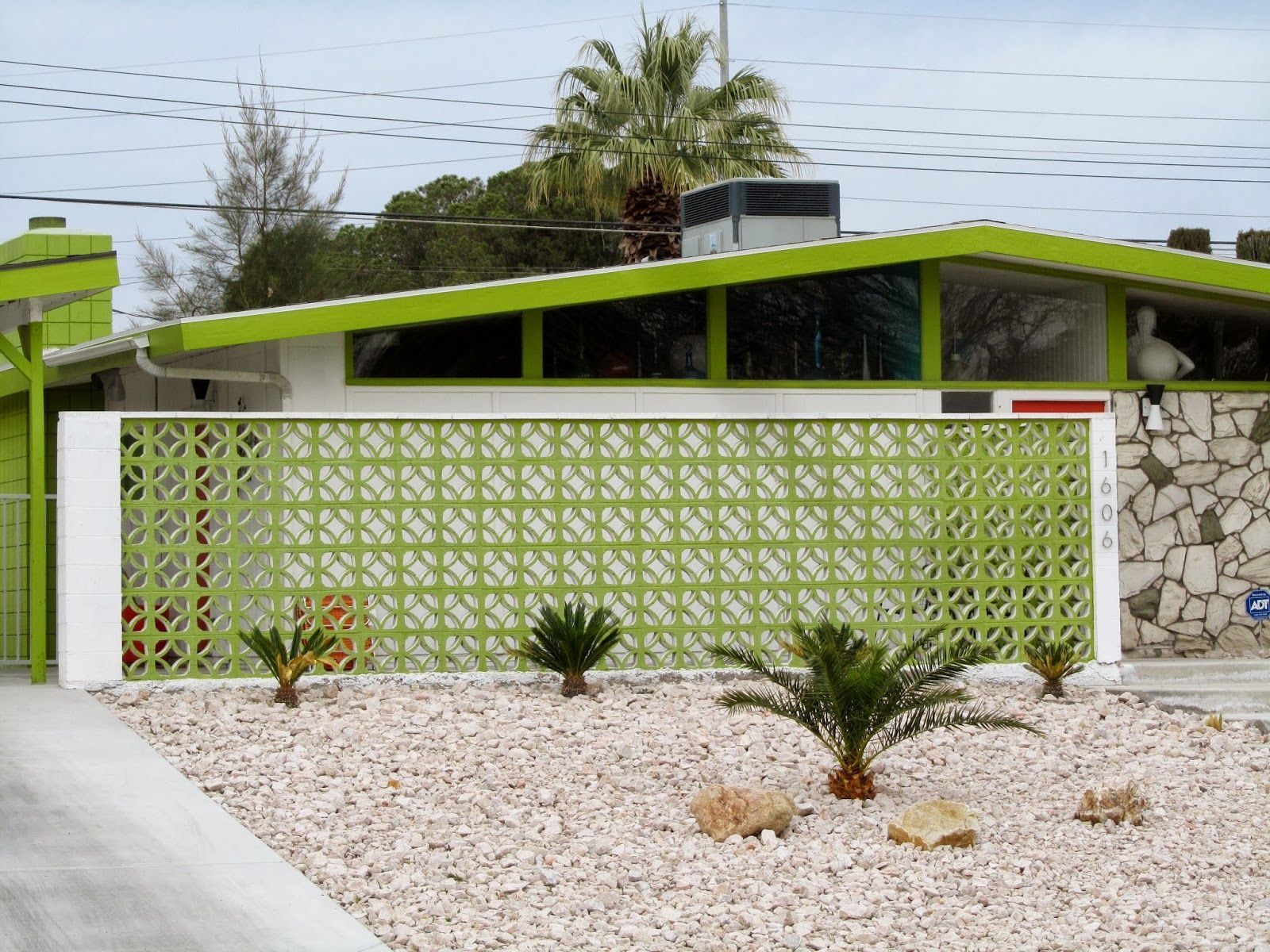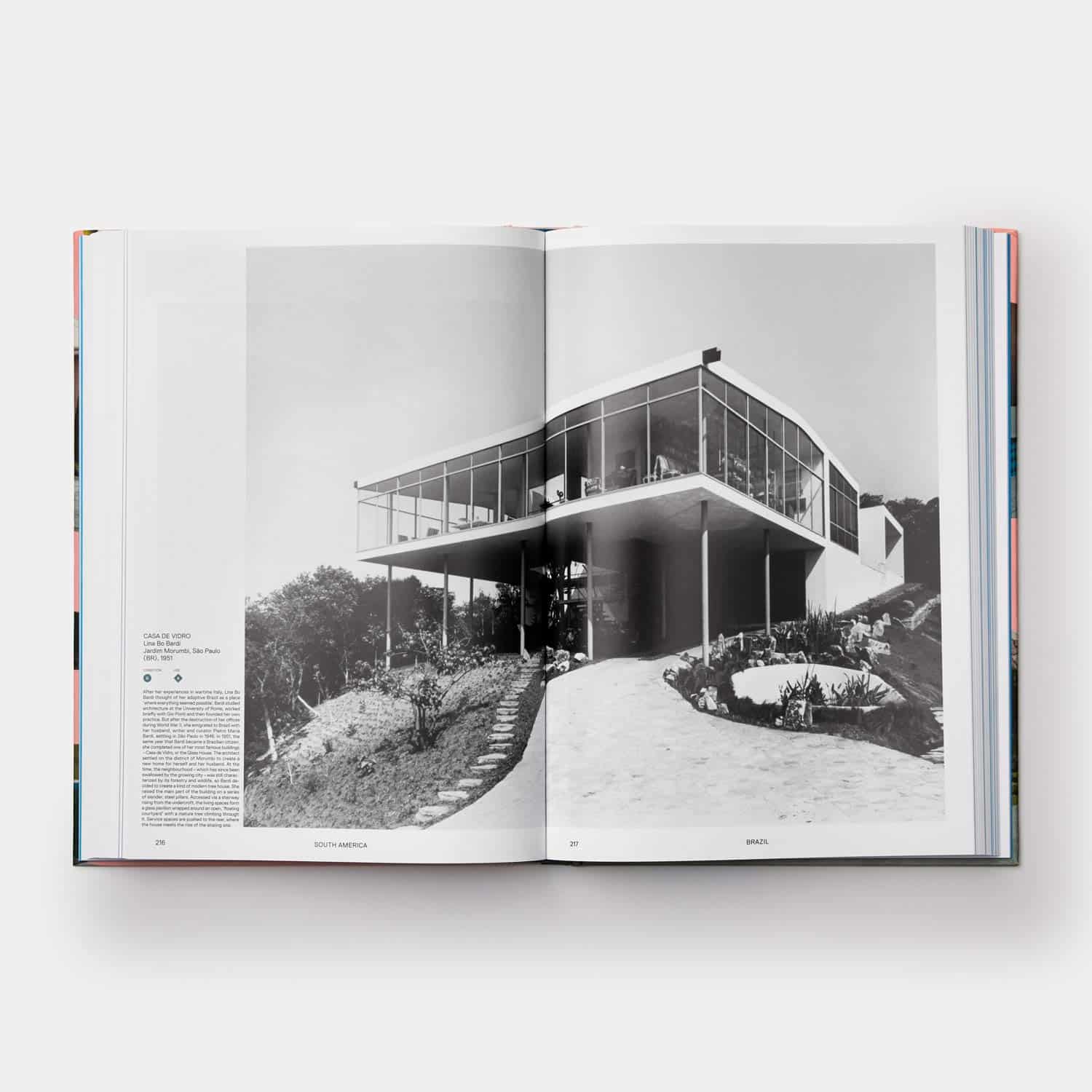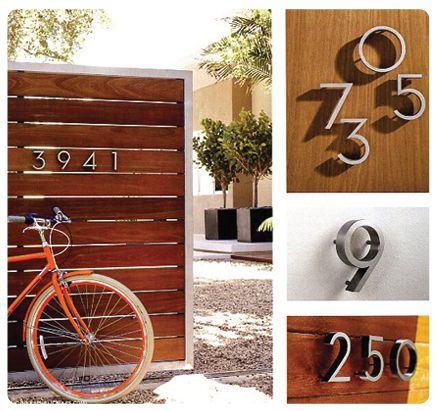Breeze Blocks 101
While you are learning about Mid-Century Modern architecture, you probably have noticed that quite a few homes in warmer locations feature walls of decorative concrete blocks. In particular, many mid century California buildings are distinguished by this element, known as “breeze blocks.”
In this guide, we will tell you all about breeze blocks—what they are, what their history is in architecture, and what their advantages are.
What is a Breeze Block?
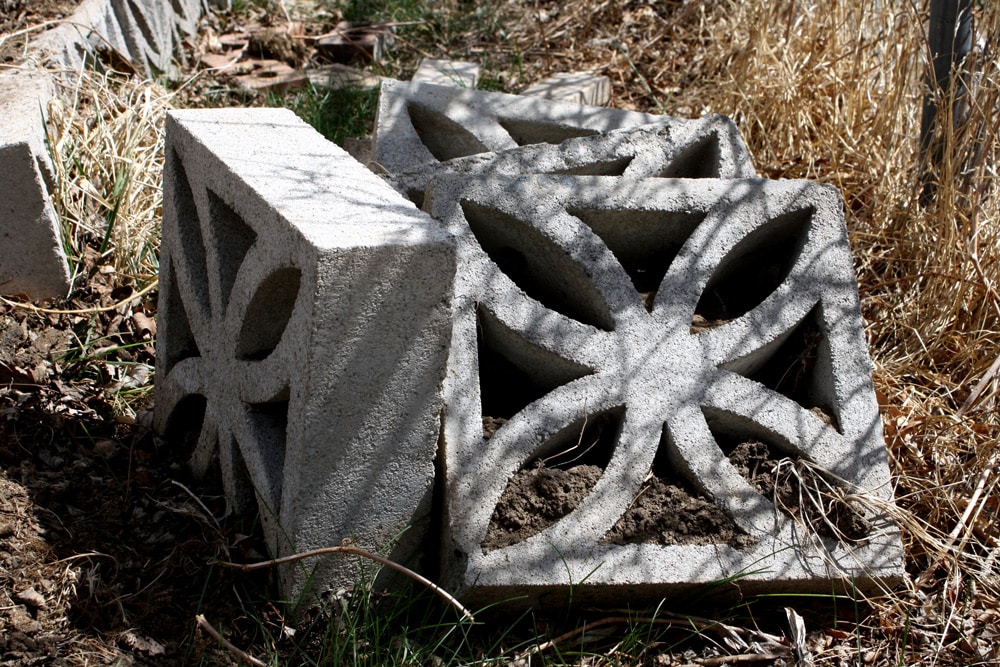
Breeze blocks go by a few other names—pattern blocks, screen blocks, vented blocks, decorative concrete blocks, and so on.
Concrete or coal ashes are bonded with cement to create breeze blocks. The patterns cut out of the blocks are not only beautiful, but also allow for ventilation through the wall. That way, the wall offers some privacy and shade, but also airflow. You can see why these decorative walls are ideal for coastal climates.
Art Deco Breeze Block Walls
Despite the fact that breeze blocks show up a lot in MCM buildings (more on that below), you might have noticed that in some respects, they are a bit atypical of the MCM style—namely, they are rather more ornate than most MCM elements.
That is because they date back to the 1930s as an Art Deco trend. Art Deco was more popular in the 20s, but was still around in the 30s.
MCM Breeze Block Walls
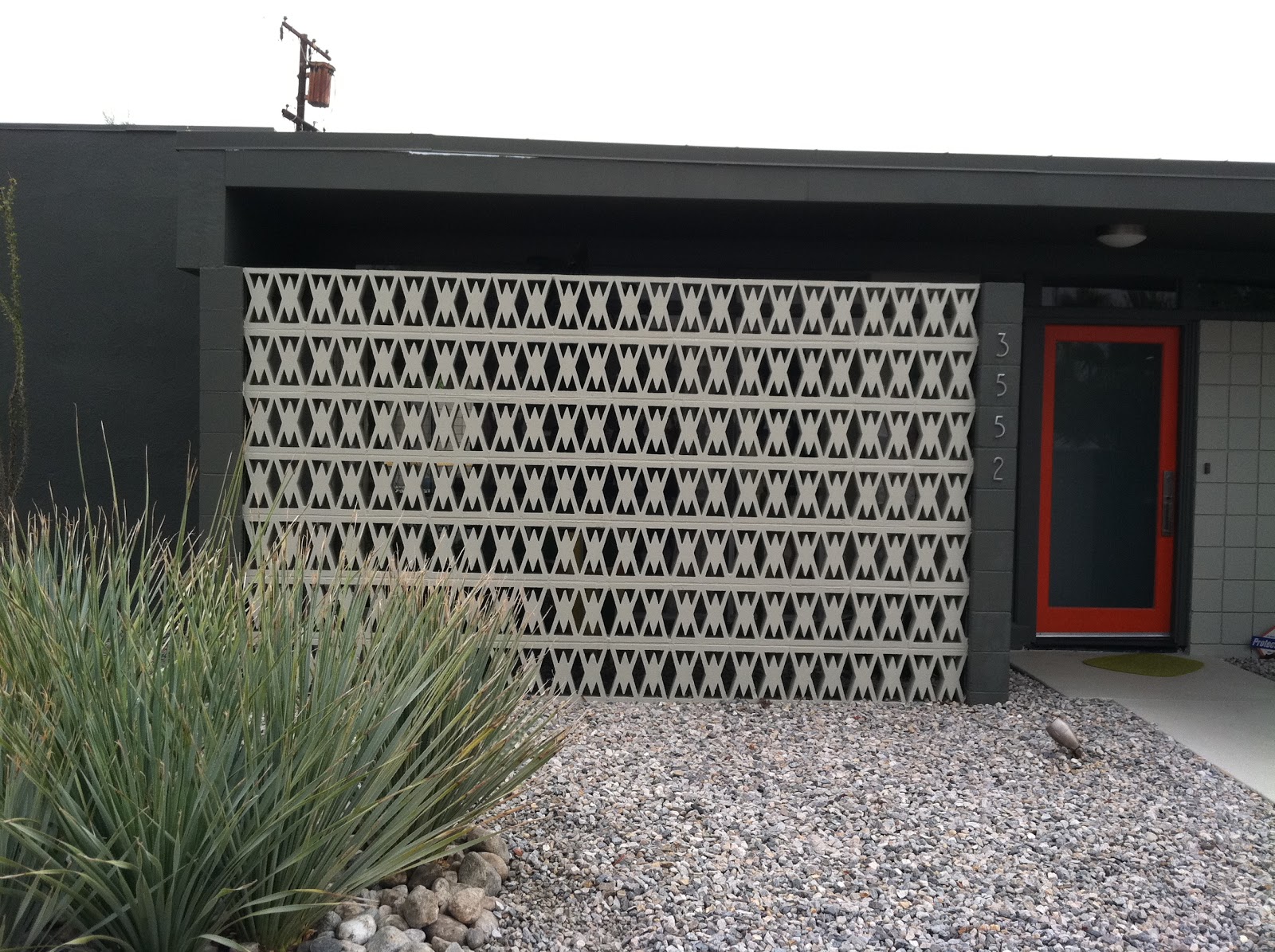
There are a few reasons why breeze blocks fit nicely into Mid-Century Modern architecture and became more popular in the 1950s and 1960s:
- Concrete: MCM architecture utilizes a lot of concrete, and breeze blocks integrate well with the style as a result.
- Large windows: Many Mid-Century Modern buildings featured large windows. This iconic element posed potential problems in warmer climates since it could lead to more passive solar heat then would be ideal. By adding breeze block walls, it was possible to block some of the sunlight, helping to keep the interiors cooler, while still allowing views outdoors through huge windows.
- Prefab: Prefabricated construction was on the rise during the mid century period. Breeze block walls were easy to manufacture for prefab buildings.
Alas, the 70s saw a transition out of the architectural styles that were popular over previous decades, and during that time period, breeze blocks fell out of fashion.
Key Benefits
Now that you know more about the history of breeze blocks and how they fit into mid century design, let’s go over the advantages you can still enjoy with breeze blocks today.
- Breeze blocks are beautiful. The patterns cut out of breeze blocks are beautiful, and can bring visual interest to what would otherwise be a plain concrete wall. Sometimes breeze block have a heavy appearance with only minimal cut-outs. Other times, a large amount of each block has been cut out, lending a lightweight, airy, lacy appearance to a wall.
- Breeze blocks offer shade and privacy. Standing behind a breeze block wall, you will be screened off from passersby, even if you are standing outdoors. You will also have some shade. Breeze blocks may be used in awnings as well.
- Even the shadows cast by breeze blocks are appealing. The shadows of breeze blocks feature the same cut-out patterns as the blocks themselves. That means that they can add aesthetic appeal to any surface they fall upon. This is one of my favorite features and it is truly a touch of unique flair when done correctly.
- You can maintain open airflow with breeze blocks. As discussed, breeze blocks allow ventilation, even while providing privacy and shade. That means that they are perfect for courtyards and other outdoor spaces in parts of the world that are hot, but breezy.
- Breeze blocks are strong. Because they consist of concrete and cement, these types of architectural blocks are strong, which is another reason that they are ideal in areas such as California that are prone to seismic events. They can also stand up to harsh weather, making them a durable, safe, long-lasting choice for construction.
- You can bring MCM or Art Deco style to your building with breeze blocks. If you are a fan of Mid Century Modern or Art Deco design, and want to bring some of that nostalgic ambiance to your own residential or commercial structure, breeze blocks are an easy way to do it.
Mid-Century Modern is a style that has stood the test of time to a large degree, despite a decline after the 70s. Moreover, over the past few years, we have seen a resurgence of enthusiasm for the style. That means that like many other MCM elements, breeze blocks are starting to make their way to more modern structures.
So, if you are planning a construction project of your own, breeze block walls are well worth considering. Their durability, open ventilation, shade, privacy and beauty may make them the perfect choice for your MCM-inspired structure.
